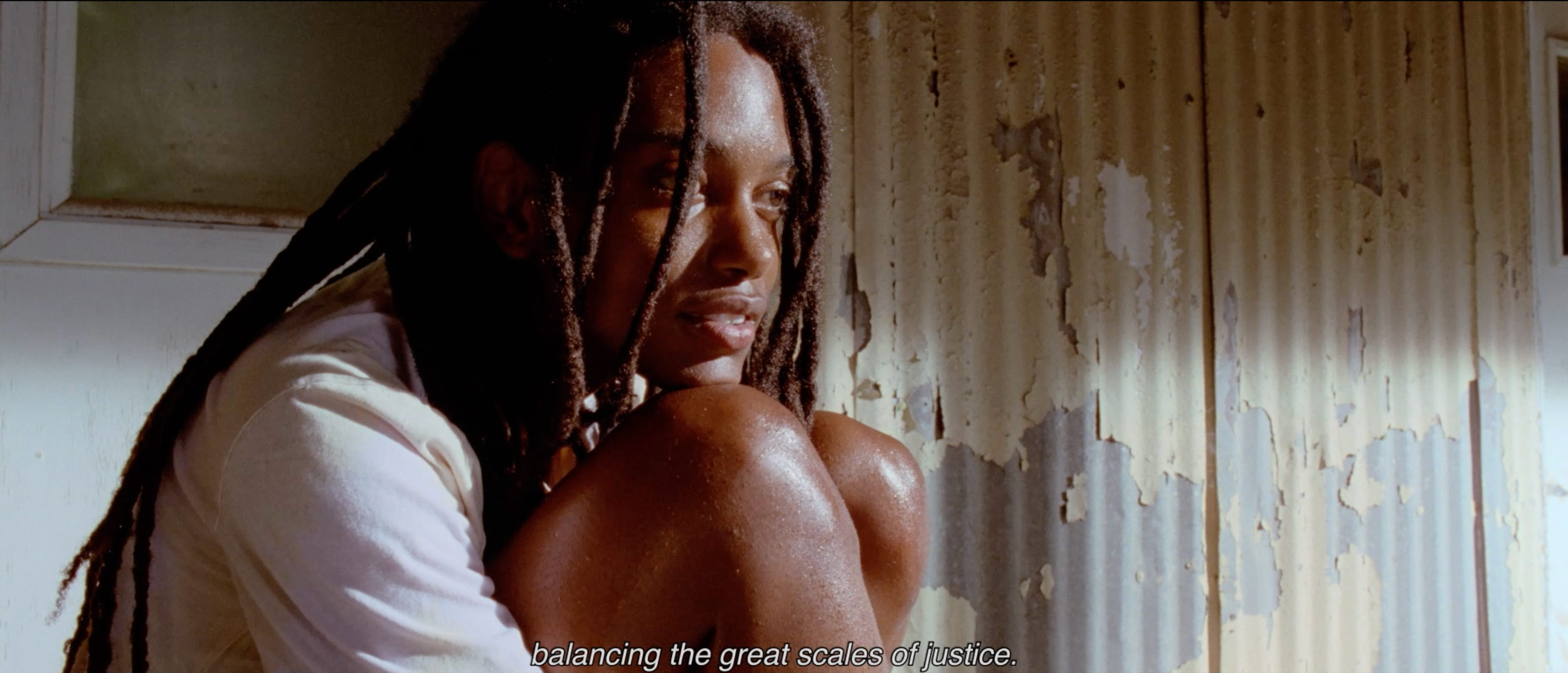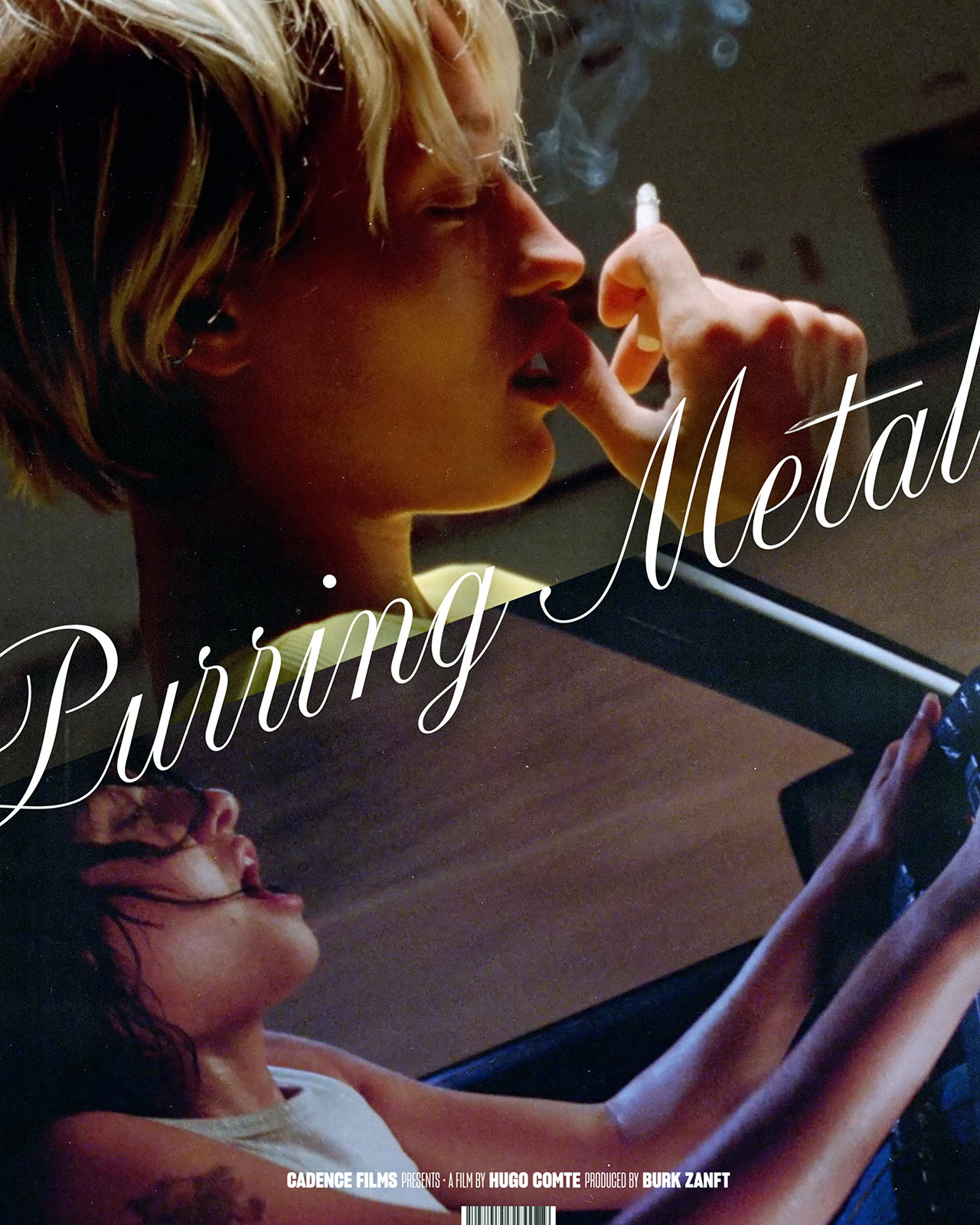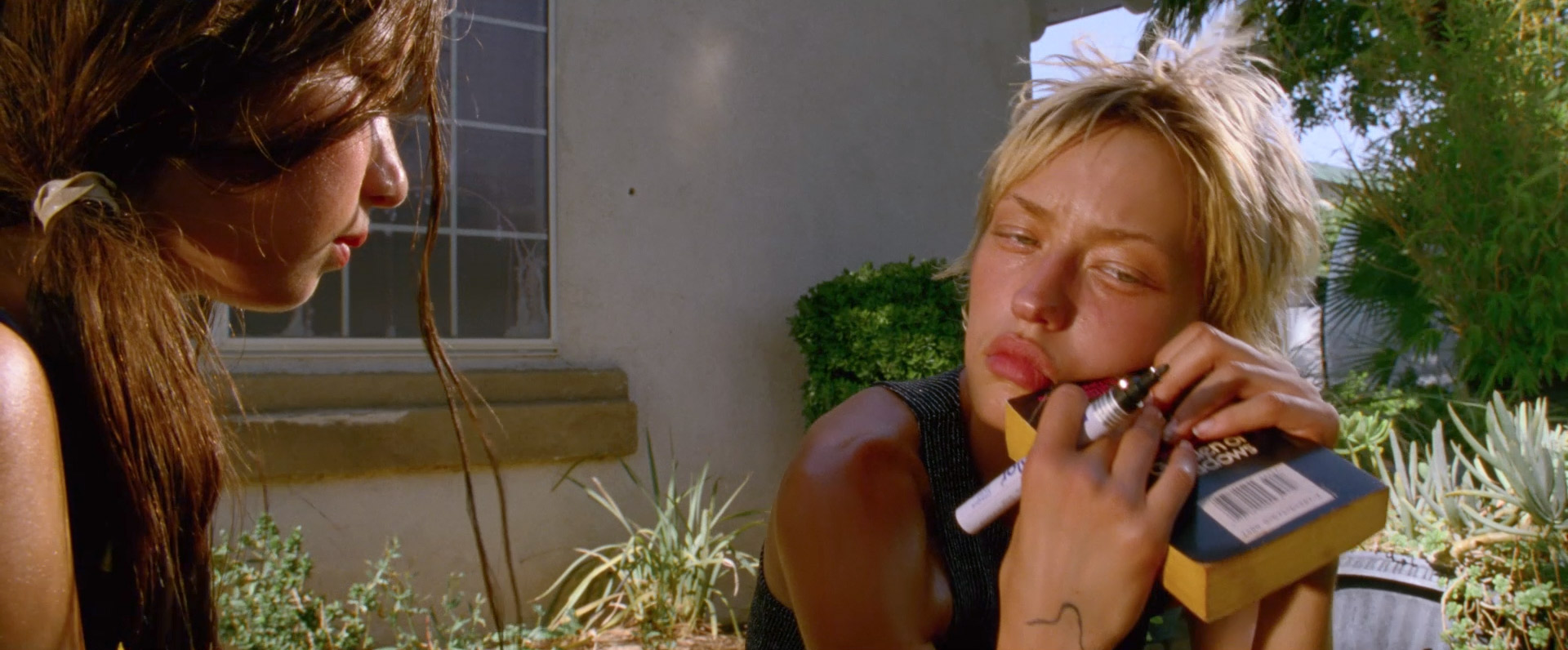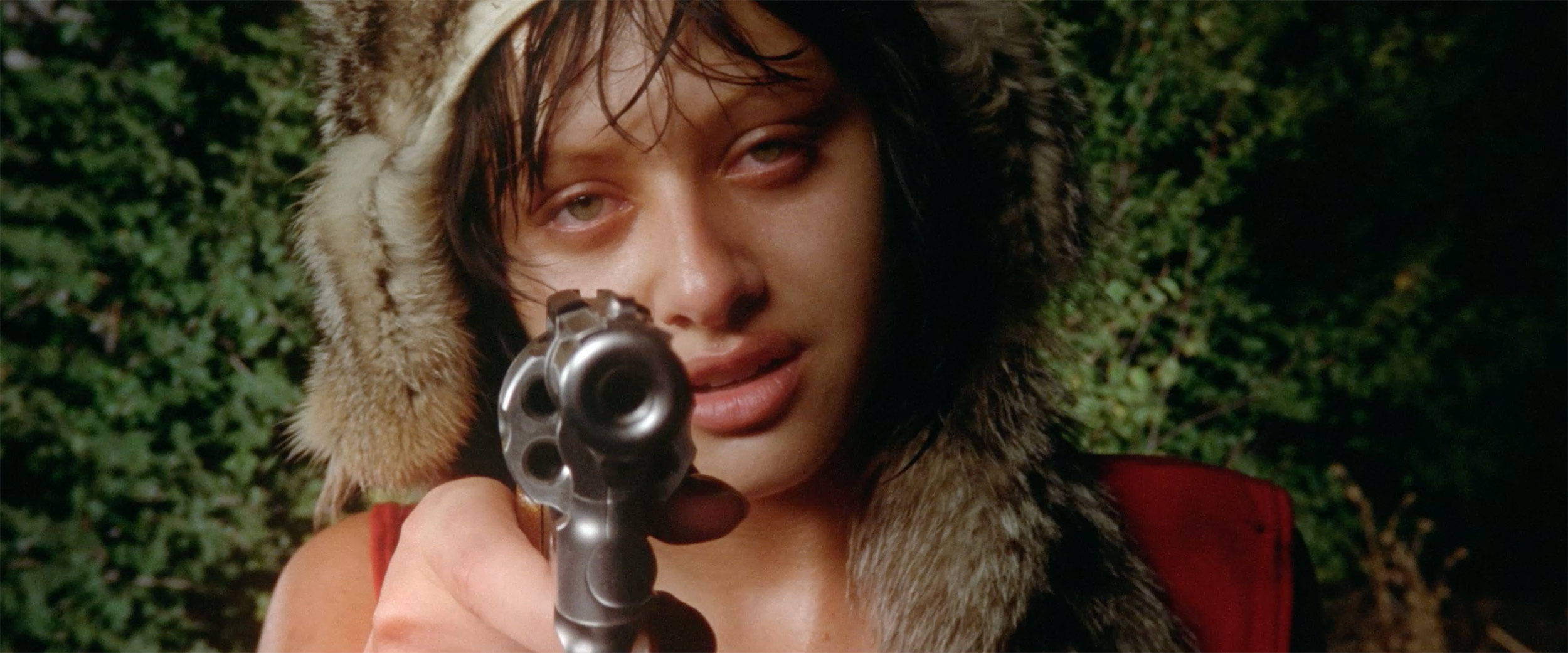The renowned fashion photographer sits down with Document to discuss love, inspiration, and attitude in his debut film, ‘Purring Metal’
Love tastes like a persimmon: The fruit’s skin has tannins that are sour in the surface, yet when they sink into the flesh underneath, their fermentation ripens into a rich spicy-sweet flavor. Such is the quality of photographer Hugo Comte’s Purring Metal, his 20-minute debut film, an ode to love’s minerally surface and warm (and sometimes violent) insides, the staying power of dreams, and the mystery of the female muse.
Told through six women’s interconnected lives, Purring Metal explores the rage behind intimacy. As director, Comte draws complex parallels between subject and object in the moving image as he does the still one. What is the difference between the obsession shared by fast friends, and sharpening a pencil until there’s nothing left? Audiences get to grapple with these visual metaphors, seeing these relationships whittle away as literal writing implements are shaved to sharpness in long takes. Sometimes covered in blood, and other times cursing like sailors, Comte’s muses exist beyond urges for sex, power, or art. Instead, they are placeholders for something impossible to explain altogether: the fleeting feeling you get when inspired deeply, when you know you’re now beholden to your vision.
From street casting to the “poorly behaved” woman, Comte sits down with Document Journal to discuss how the creative urgency behind dreams resulted in his first film.
“Each girl in Purring Metal is a different character, but if you layer them, they may all become that abstract ideal muse I have in my mind.”
Maya Kotomori: What inspired you to make a film, having such a long-standing career in photography?
Hugo Comte: To be honest, I was not necessarily inspired by anything, I just had to. Most of the things I create, I do them just because I feel a vital urge to make things. The movie was this…I woke up one day, I had a dream, and I needed to do it. It was as simple as that. If I don’t make these visions real, then I go crazy.
Maya: What was the dream like?
Hugo: I woke up with this vision of like, a hand in front of my eyes holding two cards. I don’t know if it was me, or if I was seeing from [the perspective of] someone else. It was a woman’s hand, and I had five other girls playing cards around me. I kept questioning myself: Was that me in the eye of a woman, or was it me as a woman? I started to create narratives around that scene, basically—specifically this one image of two long fingers with red nails holding the cards. A lot of the ideas in this movie are just dreams collected, and [the rest are] a lot of poetry that I was reading.
Maya: Which poets?
Hugo: Mainly Spike Milligan. I bought this book during the COVID lockdown called Small Dreams of a Scorpion. There were a few poems that completely struck me where I was like, I want to make them visual. There are even a few of them in the movie…
Maya: Your question about whether or not your initial dream was you seeing yourself as a woman or through a woman’s eyes brings me to the five different women that you and your casting director Blair Broll brought on to this project. I’m wondering what your relationship is to femininity as a man?
Hugo: I think I’m just fascinated [with] the power and the influence [of] women in my life, whether as an artist, a friend, or romantically. That contemplation I have for women is so complex and so diverse; it’s a bit overwhelming sometimes to understand, which is really what the film is about. Each girl in Purring Metal is a different character, but if you layer them, they may all become that abstract ideal muse I have in my mind. In my early work, I used to blur the gender [of my subjects]. People outside [the fashion and art world] would be like, “But is that a girl or is that a boy?” and that made me realize, Wait, actually, I am confusing people. And maybe I am confused too.
[My work is] a constant attempt to define sexuality and gender and the dynamics between sexes. For me, my movie is my ultimate answer. There is no presence of men outspoken. There are just girls, interacting with each other, and their femininity is not based on a man’s point of view. They’re just based on themselves—girls with no filter.
Maya: Now I’m really curious about the concept of violence in the film—I feel like you approach these themes of being gentle with shots of the pencil sharpener, where you’re just looking at it thinking, Wow, this would be a beautiful still photo. But also, there’s a blade shaving that pencil down to a point. So there’s always this idea of something gentle with something violent underneath it, almost. What was your intention with that?
Hugo: I think instinctively, I started to become obsessed with the quality of violence and innocence, which I think it’s such a great recap of what teenage life can be, a transition from innocence to a projection of violence in daily adult, metropolitan life. This was a huge point I got from Spike Milligan’s poems, almost like a very childish way to say things that are so harsh and tough in terms of what life can be. That’s what the pencil sharpener is, a very childish object but projected into a very violent definition of love, where you keep sharpening and basically giving everything you’ve got to someone else, but even as you willingly sharpen the pencil, there will be no pencil if you keep giving [love], keep sharpening.
You hear that idea so much in terms of relationships, and I just love making little scenes like this as a tribute to sayings that matter to people. It’s the same thing with the balloon that explodes. The little girl is falling in love with this balloon and the balloon is round and purple and cute, and bam, it just bursts, and the sound is violent and she’s completely destroyed. She wants to kill that girl [who pops it] because she took something from her. Innocence becomes violence. That’s also the title: purring, you have this very warm feeling, almost like a cat. But metal just cuts it. It’s cold but it can get really hot, and it’s sharp. That’s the whole movie, basically.
“I think that in general, any woman that has entered my life at some point, no matter the impact they’ve had on me, they’ve built up this idea of community I have in my mind and that I wanted to tell in this film.”
Maya: Purring metal is also a saying to talk about, like, a hot rod or a motorcycle. You chose to shoot in Los Angeles where there’s a lot of car culture, and a generally badass idea of women smoking cigarettes and cursing like sailors. The girls of Purring Metal are young with a level of innocence, but they’re also pretty “poorly behaved” from a classic standpoint of what a girl should be. What’s your attraction to the idea of the badass woman?
Hugo: I wanted these young women to be detached from any cultural codes of etiquette, [for] people to feel that these girls don’t behave in the ways that we tell them to, to think of poorly behaved as not conforming to these codes and how freeing that is. I’m thinking of the opening scene where we see the girl’s tongue…it’s not sexual, she’s in control, and she’s almost playing a joke that someone would think to sexualize seeing a woman’s tongue. I just wanted that feeling of rawness.
Maya: Are there any real-life women that you think might have subconsciously inspired these characters?
Hugo: Just the girls in the movie, honestly. I saw Sasha—Joni, in the movie—just walking down the street here in New York, and I was like, That’s her. And I tried to interview other people for the role, but I already knew it was her. The actresses inspired the character—they’re more than just playing the role that I had in mind, they are a true addition to the character and a true inspiration for me. I think that in general, any woman that has entered my life at some point, no matter the impact they’ve had on me, they’ve built up this idea of community I have in my mind and that I wanted to tell in this film.
Maya: What was it like to make this film coming from a fashion photography background? I know this is the first film you’ve released, but have you ever made a film that hasn’t been released before this, like an experimental or home movie?
Hugo: It is my first. I’ve written a bunch of short narratives for music videos that didn’t turn into anything. The direct link between my fashion work and this movie, I think, is just the opportunity for me to create things without following any preconception. It was a way for me to be able to create without having to deal with “keeping my style” because people recognize it and love me for one specific thing, that I have to, you know, shoot that model because that’s what people want to see, or something. I think I do have a lot of freedom and I’m always really true to my creativity in the fashion industry, it was just great to create something without having to feel the need to fit in any guidelines of that industry.
Maya: You also dipped a toe in the music industry, having scored Purring Metal as well.
Hugo: Yeah, the scoring. I’ve played music since very early, like 12 or 13 years old. But I never composed anything, I was always just improvising, I’ve never recorded or anything before. When I started to finalize the script, I had very clear feelings about the soundscape. And I started to write my music ideas down, and I ended up building a home studio and composing everything. I did the piano, the guitar—it’s completely self-produced, meaning no external intervention, no need for compromise, which is really great. [Laughs]
Music is probably my only true, permanent love. I will never lose interest. It was great for me to be able to do this, and to see that people like it. Sometimes I see people using this Purring Metal score on their TikTok, or on their Instagram reels, and I think it’s so cute. You really can, basically create a piece of culture that people can reappropriate when you make a movie and a score, and I think that’s what fascinates me in my work in general, like when someone takes a selfie, and tags me because they think that the way they took that picture feels like my work. It’s all about the attitude…the tricky thing is it’s not about aesthetic. It’s about your personality. And when I figured that out, people were copying my work to try and achieve that. But by creating that gaze in the eyes, I can be like, Alright, I did my job.
You can watch ‘Purring Metal’ here

















